Lens aperture in photography determines how much light your camera’s sensor, or film, receives in a given moment. For example, a large aperture will flood your camera’s sensor with more light than a small aperture in the same way a large window allows more light into a room than a smaller window.
Therefore, your aperture, together with your shutter speed and ISO determines how bright your photo will be.
Additionally, aperture determines your depth-of-field and how much of your photo appears sharp and in-focus. For instance, a small aperture will allow you to keep much of your photo sharp and in-focus whilst a large aperture is ideal for blurring unwanted backgrounds.
Tabel of Contents
- How Aperture in Photography works
- How is an Aperture in Photography measured?
- Are Aperture and F Stop the same
- Aperture Comparison Chart
- Aperture and Exposure in Photography
- How Aperture affects depth of field
- How Aperture affects the sharpness of your photo
- What Aperture to use
- How to use Aperture Priority Mode
- Lenses
1. How aperture in photography works
Inside your camera’s lens is an iris-like diaphragm which sits between the incoming light and your camera’s sensor/film.
To control the amount of light passing through your lens to your camera’s sensor, the diaphragm contracts and expands. Aperture refers to the size of the diaphragm’s opening.
In other words, an aperture in photography works much the same way as your own eyes in that your pupil expands to gather light when light is scarce and shrinks when light is abundant.

2. How is an aperture in photography measured?
The size of your lens aperture is denounced as f stops. The smaller the F-stop, the larger the aperture.
For instance, an F-stop of F1.8 represents a very large, bright aperture. On the other hand, an F stop of F11 represents a very small, dim aperture.
3. Are Aperture and F-Stop the same?
Yes. F Stop represents the size of your lens aperture and derives from your lens focal length.
For example, if you have a 50mm lens with an F2 aperture, you can determine the physical size of your aperture’s diameter is 25mm since 50mm divided by F2 equals 25mm.
This also explains the seemingly inverse logic between large aperture and small f number.
4. Aperture comparison chart
Below is a list comparing different apertures and the amount of light each passes through to your camera’s sensor.

5. Aperture and Exposure in Photography
Along with shutter speed, Aperture controls the amount of light your camera’s sensor or film is exposed to.
Aperture versus Shutter Speed
Aperture is the amount of light your sensor/film receives in a given moment. If you are using a large, bright aperture, you will get more light in that given moment than you will with a small, dim aperture.
Shutter speed, measured in seconds, is the duration of that moment. For instance, you might expose your sensor/film for 1 second. Alternatively, you could get twice the light by extending your shutter speed to 2 seconds because 2 seconds is twice as long as 1 second.
Therefore, the total amount of light your camera’s sensor/film receives is the sum of your aperture and shutter speed.
Thus, a large, bright aperture means you can use shorter, faster shutter speeds whilst small, dim apertures force longer, slower shutter speeds.
Real-World Example
To illustrate, imagine you are photographing your kid’s football game using a lens set to F4. After reviewing your photos, you realize everyone is blurred because your camera’s 1/200th second shutter speed is too slow to freeze the action.
Therefore, to get sharp photos, you change your aperture from F4 to F1.8. At F1.8, your sensor is receiving 5 times more light enabling you to increase your shutter speed 5-fold from 1/200th to 1/1000th of a second for pin-sharp results.
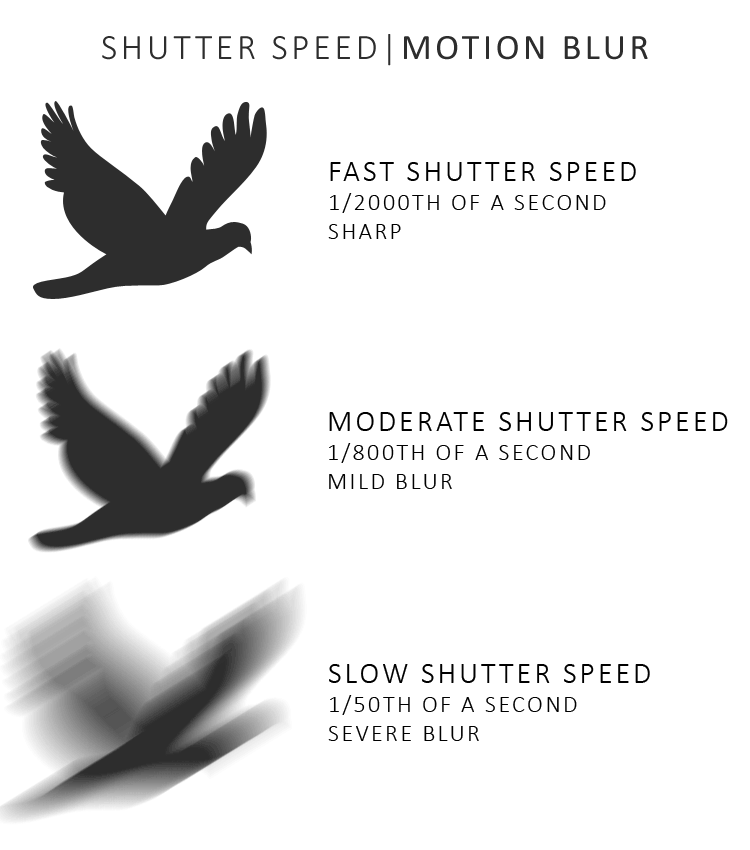
6. How Aperture affects depth of field
What is Depth of Field
Having set your camera’s focus on a subject (object or person), depth of field is the distance in front and behind your subject which remains sharp and in focus.
A shallow depth of field means focus falls off very quickly, and even immediate objects in front or behind your in-focus subject appear blurred and out of focus. For shallow depth of field, use large, bright apertures such as F1.8 to F4.

From the rocks set in front of you to the hills on the horizon, extended depth of field enables you to get your whole photo in focus. Use small apertures in photography such as F8 and beyond to extend your depth of field.
Controlling Depth of Field
Your depth of field is the sum of your aperture and focal length. Assuming you are using a 50mm lens, setting your aperture to F1.8 will produce a very shallow depth of field, perhaps only a few centimeters deep. Learn more about Focal Length.
Whereas using an Aperture of F11 will keep much of your scene, front-to-back, in focus.
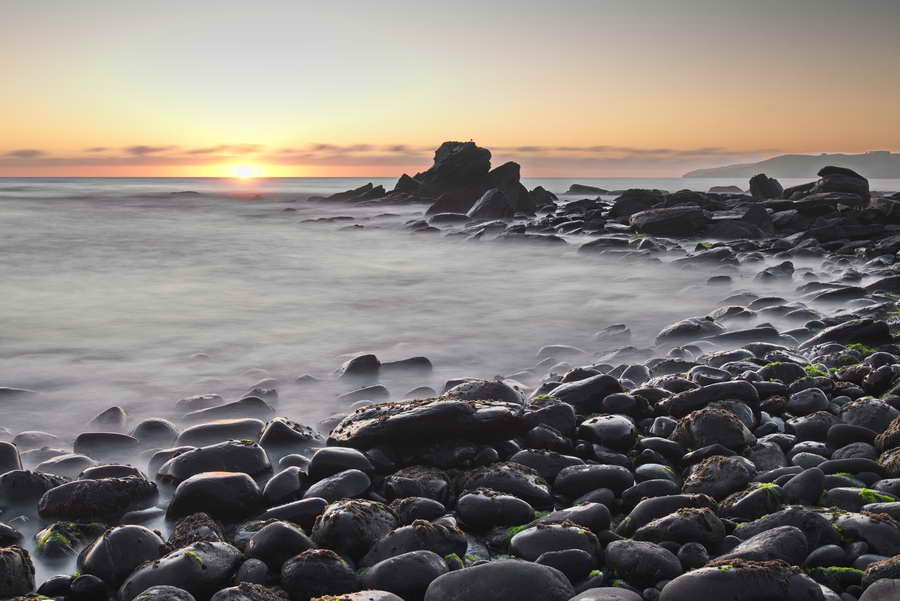
Yet aperture is not the only factor influencing your depth of field. First, focal length must be considered since a 200mm lens produces a shallower depth of field than a 28mm lens. Second is the distance between you and your subject. The closer you are to your subject, the shallower depth of field becomes.
Apertures to make background blurry
To get fantastic bokeh, use the largest aperture (smallest F-stop) your camera’s lens has. Furthermore, use the longest focal length you have and get as close to your subject as possible.

Aperture to get everything in focus
Typically you want to use the smallest aperture (largest F-number) you have. Yet, the best results require a little more finesse and an awareness of hyperfocal distance. Learn about Hyperfocal Distance

7. How Aperture affects Sharpness
Your choice of aperture in photography can affect the image quality of your photo.
Using Large Apertures in Photography
Typically, your lens will perform worse at its brightest, largest aperture. For instance, if you are using a 50mm F1.8 lens, stepping your aperture down from F1.8 to F2.8 can produce sharper, better looking photos.
Of course, doing so will reduce the amount of light your sensor/film receives potentially driving up your camera’s ISO. Also, you will be extending your depth of field and reducing the severity of your background blur.
However, some lenses do provide peak results at their largest aperture. Sadly, they tend to be larger, heavier, and more expensive.

Using Small Apertures in Photography
As your aperture gets smaller, light’s path becomes increasingly obstructed and begins to bend its way around the iris. The effect, known as diffraction, is much like an incoming wave changing course as it steers its way around an outcrop of land.
Since diffraction is effectively rerouting your light to the wrong place, expect your photo’s image quality to degrade. Whilst diffraction is ever-present, its effect grows more severe the further you shrink your aperture.
Nevertheless, it’s better to use a small, diffraction-inducing aperture in photography and get everything in focus than suffering an out-of-focus photo.
Therefore, you should use an aperture no smaller than what you need to get everything into focus.
8. What Aperture to use?
The best aperture for photography is the one that provides you the best supply of light whilst providing the depth of field you need to get everything you want in focus, in focus.
If you have a little flexibility because the light is in good supply, lenses tend to have an optical sweet spot. Whilst some lenses differ, many arrive at peek imaging performance near F5.6.
For beginners trying to determine what aperture to us, dial in whatever aperture you need to get the best exposure. Then, review your image and check focus. If portions of your photo are out of focus, you may need to extend the depth of field and use a smaller aperture.
What Aperture to use for portraits
Large apertures in photography such as F1.4 to F4 are frequently used for traditional portrait photography since the blur-inducing shallow depth of field creates a pleasant 3D-like aesthetic that separates your in-focus subject from the out of focus background.
Furthermore, blurring your subject’s background has practical advantages as you will be able to blur out inconvenient background elements such as people, lamp posts, bins, etc.
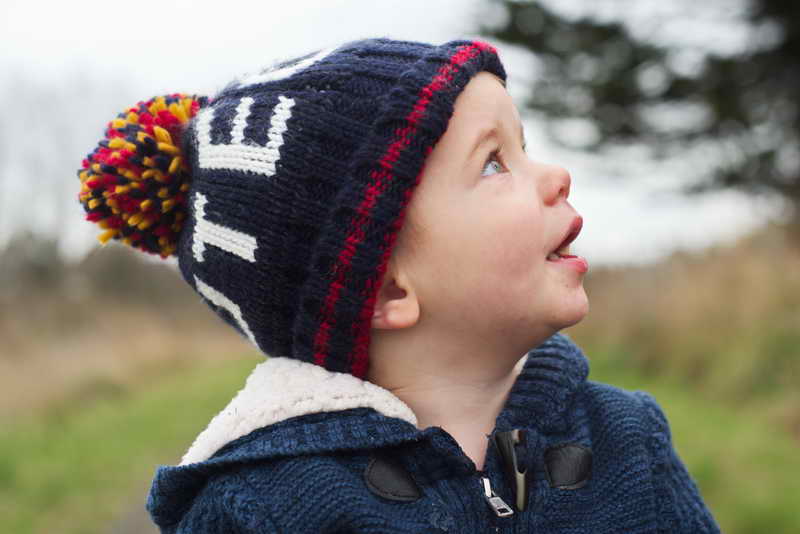
Which aperture for Landscape Photography
Most landscape photographers want their entire photo to be sharp and in focus, necessitating extended depth of field and small apertures such as F8 and beyond.

As a consequence of using small, light-starved apertures, landscape photographers tend to use tripods to access shutter speeds too slow for hand-held photography.
Learn how to avoid camera shake with the reciprocal rule.
Best aperture for Sports
In sports, your shutter speed must be fast enough to freeze-still your moving subject otherwise your subject appears blurred.
Since you no longer have the freedom to increase your supply of light by slowing your shutter speed, you need the largest, brightest possible aperture. The 70-200mm F2.8 is a popular lens for sport due to its flexible focal length and large F2.8 aperture.
However, if you have maxed your aperture and shutter speed yet still remain short of light, you need to adjust your ISO. Learn about ISO.
Best aperture for Astrophotography
Astrophotography is very much a race against time since Earth’s rotation means the stars move across the frame like any moving subject.
For instance, If I were using a 28mm lens and following the ‘500’ rule, I would use a shutter speed no slower than 17 seconds (500 / 28 = 17.8) to capture pin-sharp, motion blur-free stars.
Since a 17-second exposure at F1.8 would provide far brighter results than a 17-second exposure at F5.6, fast-aperture lenses are essential for great Astrophotography photos.
Learn how to take pictures of the stars and the Milky Way.
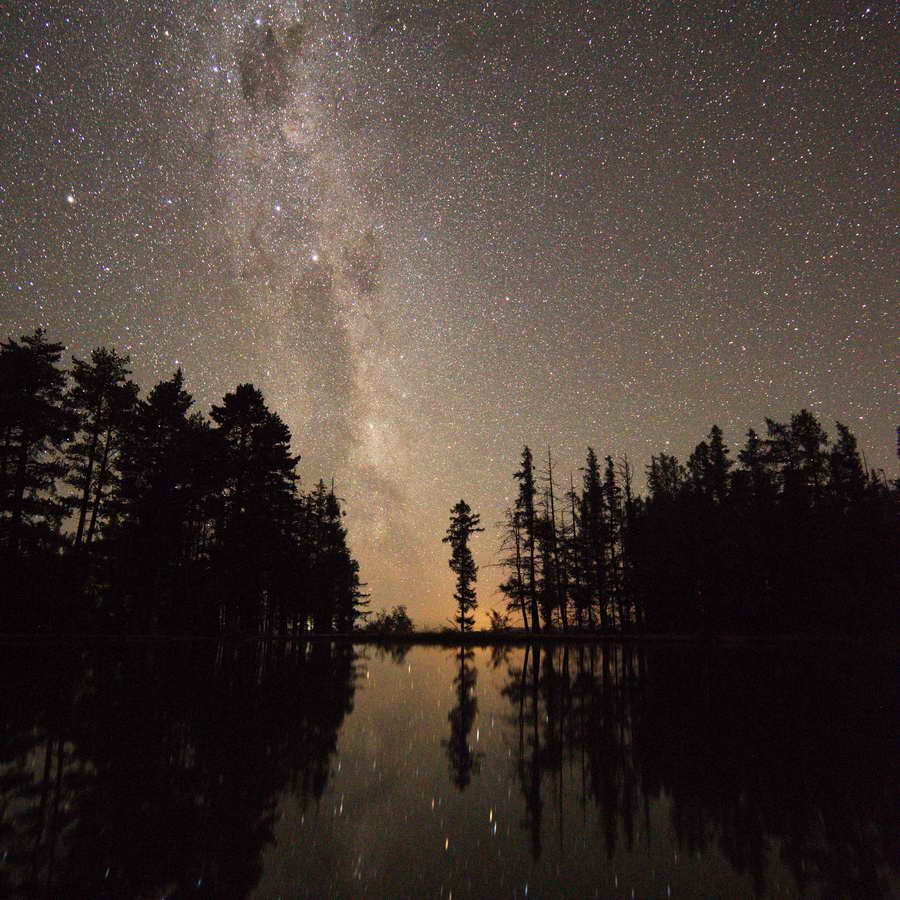
9. How to use Aperture Priority Mode
Aperture Priority is a semi-automatic mode allowing you to specify your aperture/F-number whilst the camera automatically selects the correct shutter speed and ISO to go with it.
Furthermore, aperture priority is only moderately more difficult to use than your camera’s automatic mode, yet you get full creative freedom over brightness and depth of field. If you are looking to master aperture in photography, aperture priority is a great place to begin.
5 Tips for using Aperture Priority in photography
Aperture priority is available on most camera’s beyond the point-and-click segment and usually found via the same menu as your automatic setting.
1# Remember to change your aperture
If you are used to using your camera’s automatic modes, you are likely to forget to change your aperture between shots.
Remember that your depth of field requirement may change between scenes necessitating frequent aperture adjustments.
To avoid disappointment, review your photographs before you leave the scene and make any necessary changes.
2# Use smaller apertures for sharper photographs
Lenses seldom perform well at their largest apertures. Therefore, reducing your aperture a little can dramatically improve sharpness. Although it differs between models, lenses tend to deliver peak sharpness between F5.6 and F8.
3# Avoid using really small apertures in photography
Avoid using apertures smaller than necessary. Whilst diffraction is ever-present, the smaller you set your aperture, the more diffraction will degrade your image quality.
4# Monitor your shutter speed
Decreasing your aperture reduces your camera’s supply of light. Therefore, it must soak up the light for longer using slower shutter speeds.
However, if your shutter speed becomes too slow, your photograph may suffer motion blur due to a moving subject or hand-induced camera shake.
Visit this beginner’s guide if you would like to learn more about shutter speed.
5# Monitor your ISO
If you decrease your camera’s supply of light using smaller apertures, your camera may compensate by boosting the sensor’s ISO. As ISO increases, the image quality of your photo is diminished.
Lenses
Your choice of lens determines your maximum aperture. Here are a few tips to help you choose your next lens.
Variable aperture zoom Lenses
Most affordable zoom lenses are variable aperture in that they provide a different maximum aperture at different focal lengths.
For example, if you bought a Digital SLR, it will probably come with a 18-55mm F3.5-5.6 lens.
Therefore, at 18mm the lens features a reasonably bright F3.5 aperture. Yet, as you zoom towards 55mm, the aperture decreases to F5.6.
This is a compromise to keep the price (and weight) of the lens reasonable. If you seek a large aperture across the entire zoom range, a fixed aperture zoom lens is a better option.
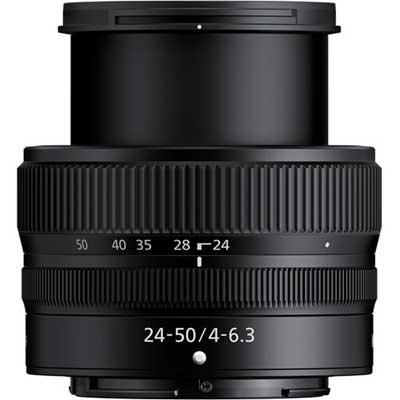
Fixed aperture zoom Lenses
A fixed aperture zoom lens maintains the same maximum aperture across its entire focal length. For instance, a 70-200mm F2.8 can shoot at a large, bright F2.8 at 70 or 200mm.
Unfortunately, these lenses are larger, heavier and more expensive.
Fixed Focal Length Prime Lenses
Fixed focal length prime lenses are the most affordable route to fast apertures. In fact, most camera systems offer a razor-sharp F1.8 50mm prime for only a few hundred dollars.
That said, zoom lenses offer the convenience of chasing down and re-framing highly-mobile subjects such as football players and children. But if you have adopted a slower, more controlled style of photography, a prime lens might be your best option.

Number of aperture blades
A lens may feature 7,8 or 9 aperture blades and each blade will feature either curved or straight edges.
Curved aperture blades are known to produce smoother transitions between in-focus and out-of-focus regions (bokeh) of your photograph.
Otherwise, straight edge aperture blades tend to serve harsher bokeh but produce excellent sun stars.
The more blades within the diaphragm, the smoother the blur. But beauty is very much in the eye of the beholder.

This is the best article I have ever read explaining the Aperture. I could never remember that larger aperture actually means smaller F-stop. Yet you used that in your article over and over until it made sense. Thank you very much.
Thanks Andrie, I’m glad I could help. Happy Shooting!